Biology
Biology concepts ? sexual dimorphism, plants, monoecious, dioecious, pistil, stamen, floral scent, ecology, ecological selection
Charles Darwin was a smart guy. He had a lot to do with recognizing sexual dimorphism and natural selection and sexual dimorphism to come up with the idea of sexual selection (natural selection based on preference of one sex for certain characteristics in the other) in evolution. But he blew it when it to recognizing sexual dimorphism in plants.
If one flower has both the male and female reproductive structures on it, it is called a perfect flower - I wonder if they have inflated egos. This makes them true hermaphrodites. The term comes from the Greek mythology; Hermaphroditus was the son of the Greek gods Hermes (dad) and Aphrodite (mom). Hermaphroditus (male) was fused with the nymph Salmacis (female) so that the result was a demigod with male and female characteristics.
That takes care of the hermaphrodite majority, but about 6% of angiosperms are what is called dioecious (two houses). They have individuals with male flowers and individuals with female flowers. Now we?re talking sexually dimorphic for sure; different individuals of a species with different characteristics based on sex. Sounds just like the animals we talked about last week.
But there can be differences in individual flowers too. A 2014 study showed that in Saponaria officinalis (soapwort), an insect pollinator can discriminate between male flowers and female flowers based on shape and color (males are a little pinker). The most successful male flowers (whose pollen got to female flowers and fertilized them) were just a little different from females, so the insect works to keep the dimorphism low.
The investment females make in fruits and seeds also keeps them smaller; they have to conserve energy for building expensive reproductive structures. A 2010 study showed that in many serotinous species (plants that release seeds after a fire), the females branch less than the males and have fewer but bigger leaves. In studying which individuals release the most seeds after a fire, those that looked least like males did the best. Saving energy by making fewer branches and leaves really does pay off, especially because the females have to invest so much in keeping the cones alive until there?s a fire.
Ecology plays a role in plant sexual dimorphism as well. The environment and the pollinators can bend plants to their will. The Leucadendron xanthoconus of South Africa is pollinated by a single beetle species (Pria cinerascens) according to a 2005 study. It gets nectar and lays it?s eggs in the male, but seeks shelter from the rain in the differently shaped female flower. It only gets food from the male, and only receives shelter from the female. Even though the female doesn?t offer any nectar ? the system works and therefore evolution keeps the males and females from being similar.
On the other end of the scale, dimorphism can end up affecting the environment as well. Spatial segregation of the sexes (SSS) can occur if the resources are spaced differently in the environment and the different sexes need different resources (it happens). This could lead to areas that are mostly male and areas that are mostly female. It?s not a problem unless they get so far apart that the wind or the animal pollinators don?t make it from the males to the females.
Davis, S., Dudle, D., Nawrocki, J., Freestone, L., Konieczny, P., Tobin, M., & Britton, M. (2014). Sexual Dimorphism of Staminate- and Pistillate-Phase Flowers of Saponaria officinalis (Bouncing Bet) Affects Pollinator Behavior and Seed Set PLoS ONE, 9 (4) DOI: 10.1371/journal.pone.0093615
HEMBORG,., & BOND, W. (2005). Different rewards in female and male flowers can explain the evolution of sexual dimorphism in plants Biological Journal of the Linnean Society, 85 (1), 97-109 DOI: 10.1111/j.1095-8312.2005.00477.x
Bonduriansky, R., Maklakov, A., Zajitschek, F., & Brooks, R. (2008). Sexual selection, sexual conflict and the evolution of ageing and life span Functional Ecology, 22 (3), 443-453 DOI: 10.1111/j.1365-2435.2008.01417.x
Pickup, M., & Barrett, S. (2011). Reversal of height dimorphism promotes pollen and seed dispersal in a wind-pollinated dioecious plant Biology Letters, 8 (2), 245-248 DOI: 10.1098/rsbl.2011.0950
Okamoto, T., Kawakita, A., Goto, R., Svensson, G., & Kato, M. (2013). Active pollination favours sexual dimorphism in floral scent Proceedings of the Royal Society B: Biological Sciences, 280 (1772), 20132280-20132280 DOI: 10.1098/rspb.2013.2280
- Hermaphrodite
Term: hermaphroditeLiterally meaning: ?Hermes and Aphrodite (in one body)?Origin: Anc Greek????????????/Hermaphroditos(=a minor deity, the handsome youth son of Hermes and Aphrodite who was fused with nymph, Salmacis, after her prayer...
- 1. Reproduction In Organisms
Click here for PDF- Reproduction is a process in which an organism gives rise to young ones (offspring) similar to itself. - The period from birth to the natural death of an organism represents its life span. - ...
- Boys Will Be Boys? And Then Girls
Biology concepts ? botany, monoecious, dichogamy, imperfect and perfect flowers, self-pollination, cross-pollination, self-incompatibility, heterostyly This clip shows the mating of hermaphroditic leopard slugs. Each may provide male gametes for...
- The Seeds Of Inheritance
Biology Concepts ? pollen, plastid inheritance, gymnosperms, angiosperms I am coming to believe that plants are more complex than animals, even more complex than females. Female plants must be the most difficult things on Earth to understand! Complete...
- The Perils Of Plant Monogamy
Biology concepts ? pollination, single pollinator, co-evolution, co-divergence What?s bugging her, it?s supposed to be a party!Imagine the best party of the year ? it?s cold outside, but hot inside. The food is great, all your friends are there, everyone...
Biology
Boy Plants Are From Mars ?..
Biology concepts ? sexual dimorphism, plants, monoecious, dioecious, pistil, stamen, floral scent, ecology, ecological selection
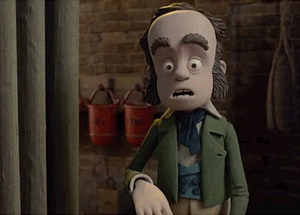 |
| Charles Darwin missed the boat on linking his sexual and natural selection in animals to plants as well. This is odd because he was quite the botanist and spent many years studying grasses and such with his son. The parallels between selection in plants and animals might have strengthened his initial argument, but there would still be dissent about the descent of man. |
Does it seem weird to talk gender differences in plants? Yes, they do have genders and sex chromosomes, but it's way more complicated in plants than in animals. More complicated probably means more exceptions, but now let?s focus on the main types of reproductive systems in plants and the types of sexual dimorphism they create.
We have talked about how plants come in many varieties-angiosperms, gymnosperms, bryophytes, etc. in previous posts. Many can reproduce both sexually and asexually, but for today, let?s limit ourselves to angiosperms (flowering plants) and sexual reproduction.
More than 90% of flowering plants have flowers with male reproductive organs (stamen) and female reproductive organs (pistil) on the same individual plant. The term in botany for this is monoecy ? the plant is monoecious (mono = one and ecious = house).
The anther produces pollen (the male microgametophyte, see this post) and the carpel produces the ovule with the egg cells (female microgametophyte). How could a plant have differences based on sex if both sexes are on the same flower? Can a flower be dimorphic with itself? Well?. no, but it isn?t always that simple.
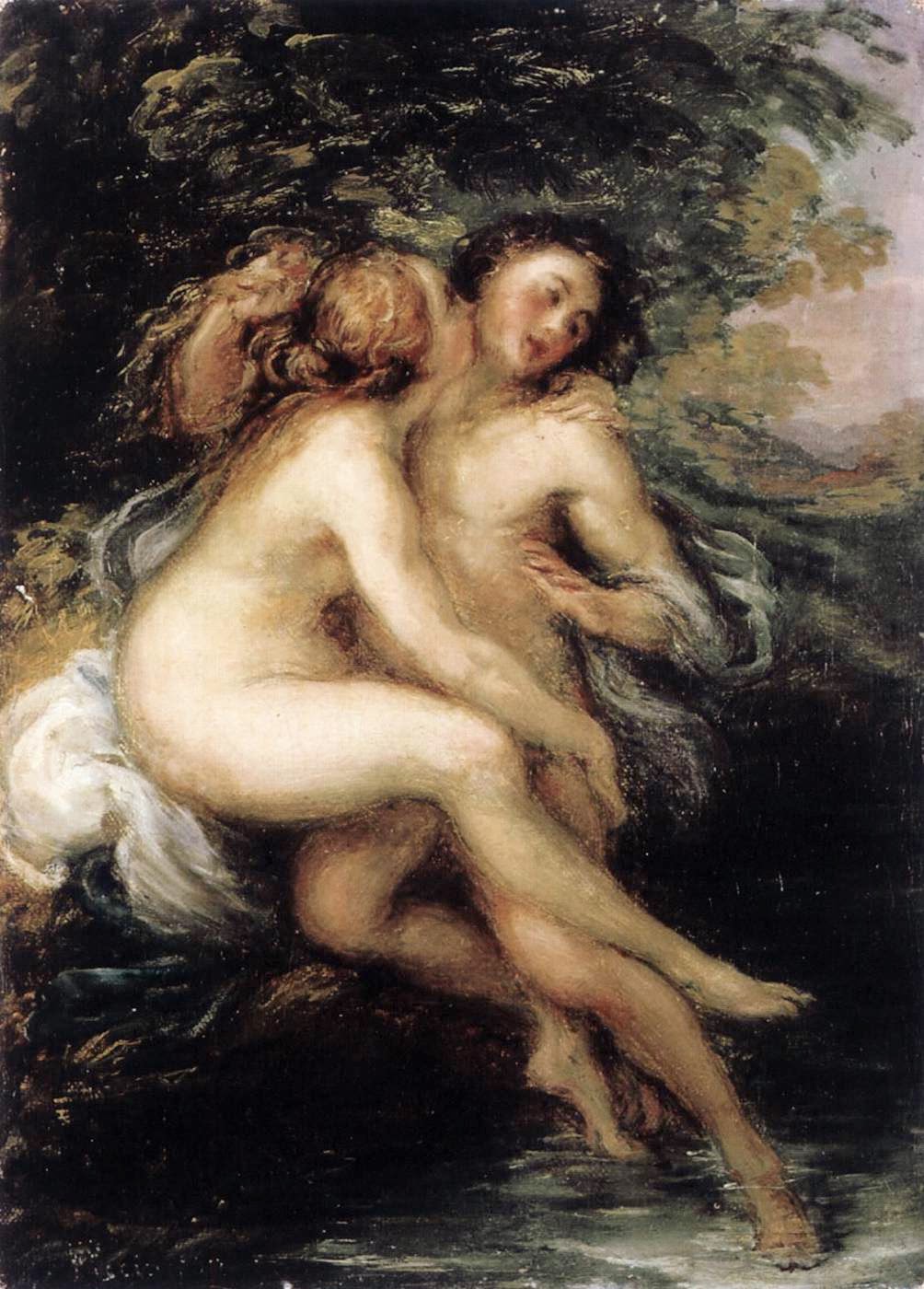 |
| Carnovali?s painting of Hermaphroditus and Salmacis from 1856. The nymph became so smitten with him on first sight that she prayed they would never be parted. The wish was granted. Note the soft outlines, this was a radical move in Italy in the 1800?s and got some of his paintings rejected by the church. |
In science we use the term more strictly; it means one individual that has both and female reproductive organs. This happens to rarely in animals. But in flowering plants it?s the rule rather than the exception.
But in some monoecious plants, the flowers aren?t perfect. Individual flowers will have either male or female reproductive parts. These are called?. you guessed it, imperfect flowers.
So, can an imperfect monoecious plant be sexually dimorphic? On one hand, it is a hermaphroditic individual plant, just like a plant with perfect flowers; both male and female reproductive organs are found in one individual. This would argue that it can?t be sexually dimorphic, just like the perfect plant.
But on the other hand, it has two different types of flowers, and they look different because one has staminate structures (anther + filament) and the other has pistillate structures (pistil = ovary + stigma + style). Because of this, the two types of flowers are different morphs (different shaped versions), and that makes them sexually dimorphic. Does it matter that they?re on the same individual plant? I leave that argument to you.
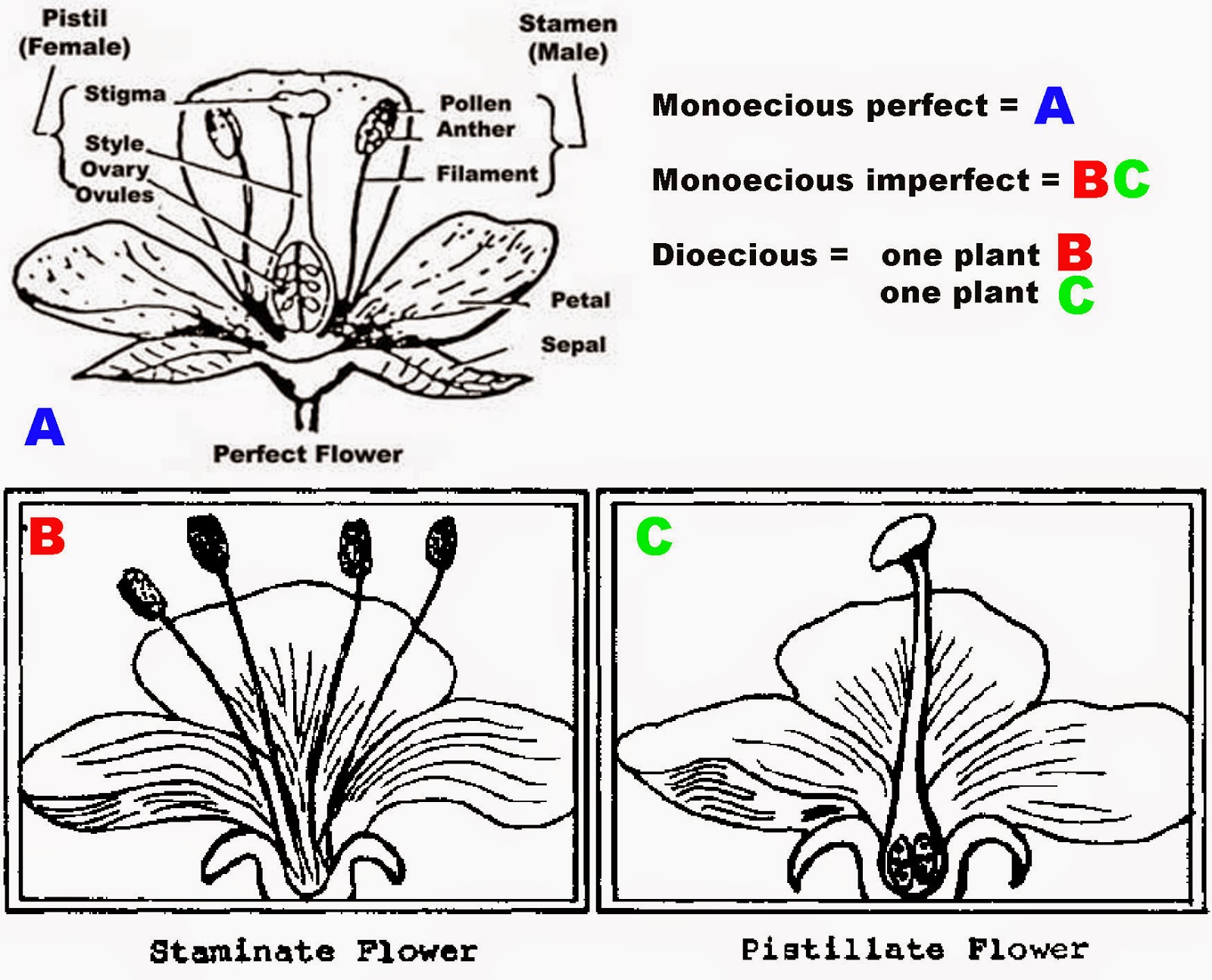 |
| The top line drawing is a perfect flower, both male and female. The bottom drawings are of a male (left) and female flower. These can exist on the same plant ? monoecious imperfect, or on dioecious plants. It?s not quite this simple, but wait until next week for that. |
Sexual dimorphism in plants comes in two main flavors, just like in animals. One is obvious; differences in reproductive organs (primary sex characteristics) will make the flowers look different. The second type is more interesting. You can have difference in characteristics not directly related to reproductive organs (secondary sex characteristics). Dimorphisms could include the shape, color, number, or smell of the flowers, or even differences in the vegetation of the plants. Who knew that plant sexual characteristics could be so complicated?
In general, male flowers are smaller and more numerous than female flowers. Think about it. Males need to spread as much pollen as possible, whereas females spend much more energy to make fruits and seeds. Just like in animals, males make lots of reproductive cells, and females make fewer ? so more, smaller flowers in males makes sense.
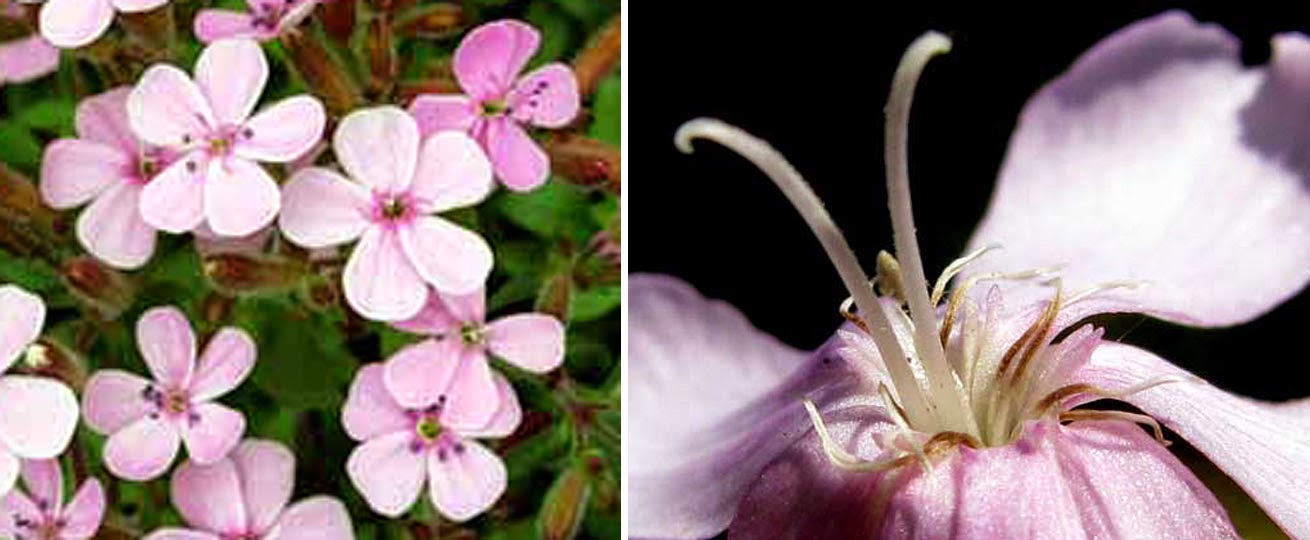 |
| The male soapwort flowers are on the left. They have smaller flowers and more variability in coloring. The female flower is on the right. The tall structures are the pistil. Compare them to the anthers in the male flowers. |
Scent can be another dimorphism. Most often, the scent of male and female flowers is very similar; this is so they can attract the same pollinators. But an exception is Phyllanthaceaeplants as shown in a 2013 paper. A parasitic moth is the pollinator. It gathers pollen from males, offers it to the female flowers where it lays its eggs. The larvae then eat the seeds - so the females need to be fertilized for this system to work. This means that the beetle really needs to find male flowers first.
Mated female beetles prefer the smell of the male flower, so female beetles being mated drives them to collect pollen by attracting them to the male flowers more than the female ones. Then, when it visits the female flower to lay its eggs, it brings along the pollen to ensure a food source (seeds) for the larvae.
The differences between the sexes can be seen in the plants as a whole too. Longer living dioecious plants often have males that are larger. Male seeds will be heavier and germinate earlier than females. The extra endosperm gives them a chance at establishing themselves and growing larger, and the early germination also gives them a head start on the females. So no wonder they are often bigger.
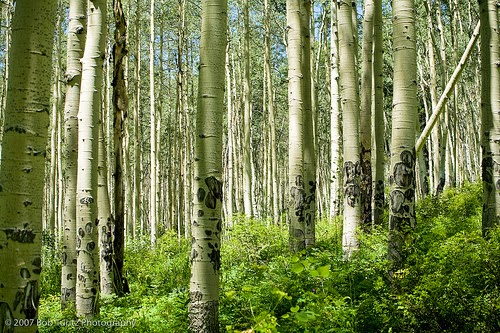 |
| The quaking Aspen is an exception. It is long lived, but the females are usually bigger and have more clonal propagation. And the exception to the exception ? Pando, one of the oldest and largest organisms on Earth is a clonal population of quaking aspens in Utah ? but they?re male! |
Another example of plant size dimorphism is the Rumex hastatulus from a paper from 2012. This is a wind pollinated and wind dispersed (for seeds) plant. The male grows taller than the females early, so it's taller when the pollen is dispersed (better distance). Then the female grows more and is taller than the males when the wind disperses the seeds (better distance again). Neat how that works out.
On the other hand, plants that live shorter lives usually have females that are bigger. In the perennial plant Silene latifolia, growth and survival are same in male and female until reproduction begins, the females grow bigger and live longer. There is a live fast and die young strategy for the males ? their job is done first, a lot like female spiders that eat the males after mating. By providing their mate with a meal (himself), the male spider improves the chance she will lay healthy eggs.
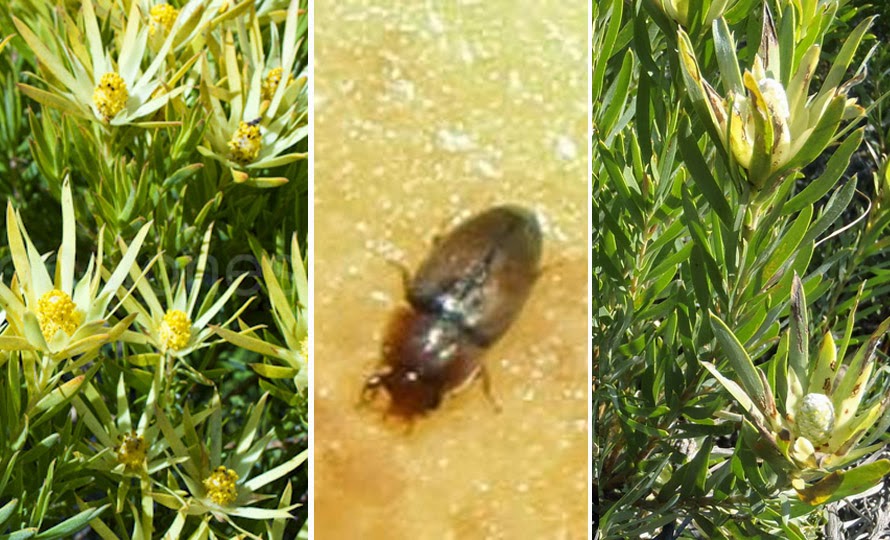 |
| On the left is the male L. xanthoconusplant with flowers. These provide the Pria beetle in the middle with nectar. The female plant and flowers on the right are shaped very differently and provide the beetle with shelter. It doesn?t mean to pollinate the female, it?s just trying to get out of the rain. |
The same plant demonstrates another ecologically driven dimorphism. Males that maximize their number of flowers get visited by more beetles, but the investment makes them die sooner. Bond and Maze in 1999showed that the males spend more on non-photosynthetic flowers (because they aren't green) and that these flowers cover up more of the photosynthetic leaves. The dimorphism is that the female plants live longer.
In many dioecious plants, the sex ratio is nearly 1:1 male:female. That makes sense, unless there are longevity issues induced by one sex or the other (like females dying younger because they put more into making fruits or the example immediately above). However, in some plants the ratio may be way off. Males may be bigger, and they may make less defense toxins, therefore, they may get eaten by herbivores more. This example not withstanding, male bias is more common than female bias.
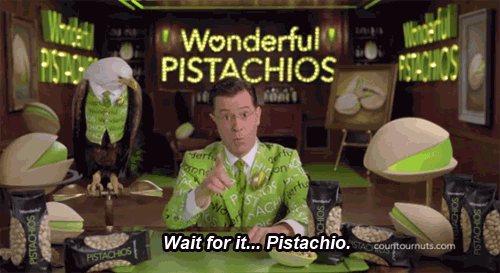 |
| Biologically, an interesting picture. Stephen Colbert is about six feet tall, sexually dimorphic than most females based on height and haircut. The bald eagle has reverse sexual size dimorphism, the females are usually larger. And the pistachio tree is dioecious and has a sexually dimorphic ratio; there is about one male for every 10 females. |
A report in 2010 stated that SSS usually works out so the males end up in areas of less resources and females in areas of more. Females need the resources more, and while the less ideal areas mean fewer competitors for the males. That?s the general rule ? males are limited by competition, and females are limited by resources ? think about that.
Next week, the sexual dimorphism of plants seems strange to us because we don?t really see the difference between males and females (maybe in holly plants). But it does get weirder. Animals have males, females, and hermaphrodites. But plants take it to a whole other level.
For more information or classroom activities, see:
Monoecious/dioecious ?
http://passel.unl.edu/pages/printinformationmodule.php?idinformationmodule=1087230040
http://www.saylorplants.com/SaylorPlants/Ref_Info/Dioecious2w.htm
http://www.google.com/url?sa=t&rct=j&q=&esrc=s&source=web&cd=1&ved=0CEkQFjAA&url=http%3A%2F%2Foklahoma4h.okstate.edu%2Flitol%2Ffile%2Fothers%2Fenrichment%2F4h500.pdf&ei=aXvKT4TuMIeC2wW1q4HaCw&usg=AFQjCNGyz1D_o5uVX0nMrNa2VpjchuJHgw
http://botany.csdl.tamu.edu/FLORA/Wilson/pp/s99/flowers.htm
http://www.oakleafgardening.com/glossary-terms/hermaphrodite-monoecious-dioecious/
http://www.bushmansfriend.co.nz/dioecious-plants-xidc18308.html
Spatial segregation of sexes ?
http://www.jstor.org/discover/10.2307/2461752?sid=21105872536271&uid=2&uid=3739256&uid=70&uid=4&uid=2129&uid=3739664
https://stat.ethz.ch/pipermail/r-sig-geo/2012-May/015047.html
http://www.google.com/url?sa=t&rct=j&q=&esrc=s&source=web&cd=8&ved=0CFUQFjAH&url=http%3A%2F%2Fwww.simonqueenborough.com%2Fassets%2Fpubs%2F2012-Gao-JTFS.pdf&ei=qMseVeWdDYewogSJi4HwDg&usg=AFQjCNEtvuIR1yAJLZBXaKeCAkaPHlOBuw&sig2=EfJdbpE9l_lakRzE4aAosw
http://www.google.com/url?sa=t&rct=j&q=&esrc=s&source=web&cd=4&ved=0CDoQFjAD&url=http%3A%2F%2Fwww.jipb.net%2Ftupian%2F2009%2F3%2F16%2F131037.pdf&ei=qMseVeWdDYewogSJi4HwDg&usg=AFQjCNHuCVXbQ_rim7I9DcWRk_-vevr1ZQ&sig2=vsjcDfSzoOW1A9Ze4iMr1w
https://books.google.com/books?id=dL4LICUE-LYC&pg=PA111&lpg=PA111&dq=spatial+segregation+of+sexes&source=bl&ots=a9V76Zal_s&sig=XU28cWwW6jF8zX7C1fSmU9_wQAU&hl=en&sa=X&ei=AsweVd-vIpDLoAT_i4KwAQ&ved=0CCIQ6AEwATgK#v=onepage&q=spatial%20segregation%20of%20sexes&f=false
http://www.ecoscience.ulaval.ca/en/paper/sex-related-spatial-segregation-and-growth-in-a-dioecious-conifer-along-environmental-gradients-in-northwestern-patagonia
Serotiny ?
http://www.nps.gov/fire/wildland-fire/learning-center/educator-resources/lesson-plans/fire-adaptation.cfm
http://www.google.com/url?sa=t&rct=j&q=&esrc=s&source=web&cd=2&ved=0CCYQFjAB&url=http%3A%2F%2Fcst.yale.edu%2Fsites%2Fdefault%2Ffiles%2FCoevolution%2520case%2520study%2520framework.docx&ei=sNQeVdfdIdi0oQSHzIGoDA&usg=AFQjCNGrjvt9qSirqMHg3VETXeGWL8NCxA&sig2=a8vQRJAa-T0icLs_XT_Vmw
http://www.bsu.edu/eft/baseballsong/p/teachers/classroom_fire.html
https://www.plt.org/newsletter-the-nature-of-fire
http://indianapublicmedia.org/amomentofscience/lodgepole-pine-trees-love-forest-fires/
http://techalive.mtu.edu/meec/module11/FireandJackPine.htm
http://forestry.about.com/od/forestfire/a/Serotiny.htm
- Hermaphrodite
Term: hermaphroditeLiterally meaning: ?Hermes and Aphrodite (in one body)?Origin: Anc Greek????????????/Hermaphroditos(=a minor deity, the handsome youth son of Hermes and Aphrodite who was fused with nymph, Salmacis, after her prayer...
- 1. Reproduction In Organisms
Click here for PDF- Reproduction is a process in which an organism gives rise to young ones (offspring) similar to itself. - The period from birth to the natural death of an organism represents its life span. - ...
- Boys Will Be Boys? And Then Girls
Biology concepts ? botany, monoecious, dichogamy, imperfect and perfect flowers, self-pollination, cross-pollination, self-incompatibility, heterostyly This clip shows the mating of hermaphroditic leopard slugs. Each may provide male gametes for...
- The Seeds Of Inheritance
Biology Concepts ? pollen, plastid inheritance, gymnosperms, angiosperms I am coming to believe that plants are more complex than animals, even more complex than females. Female plants must be the most difficult things on Earth to understand! Complete...
- The Perils Of Plant Monogamy
Biology concepts ? pollination, single pollinator, co-evolution, co-divergence What?s bugging her, it?s supposed to be a party!Imagine the best party of the year ? it?s cold outside, but hot inside. The food is great, all your friends are there, everyone...
